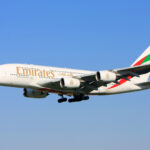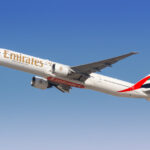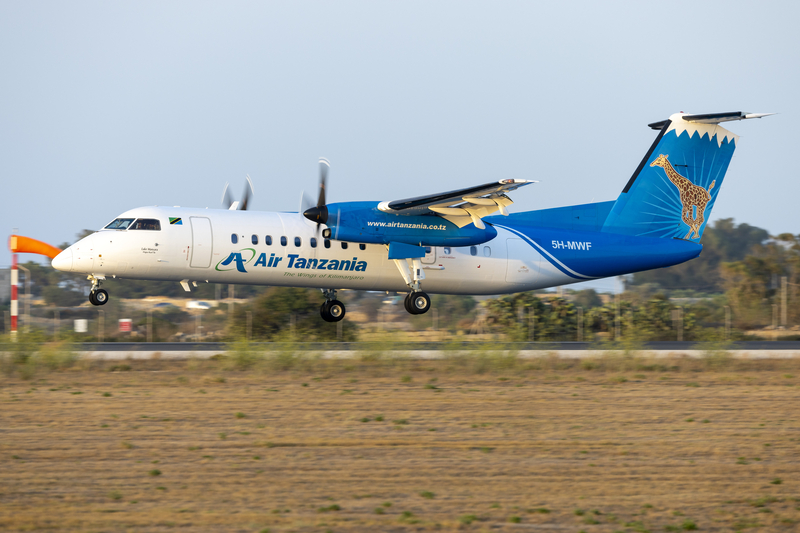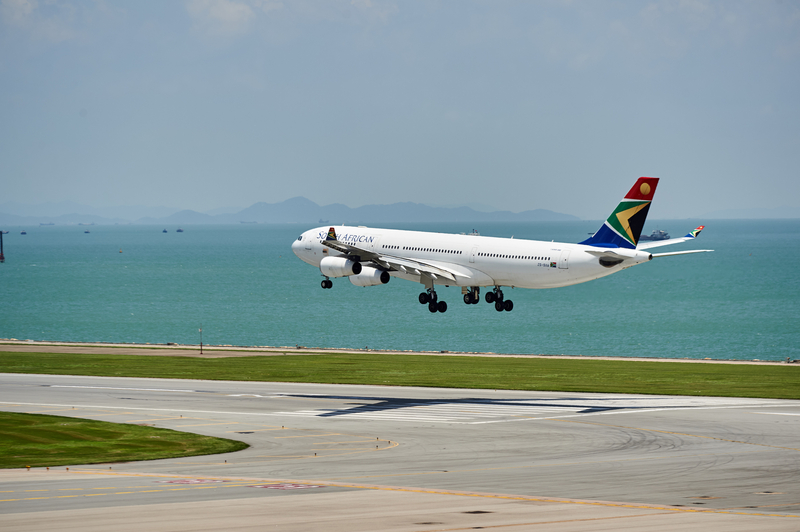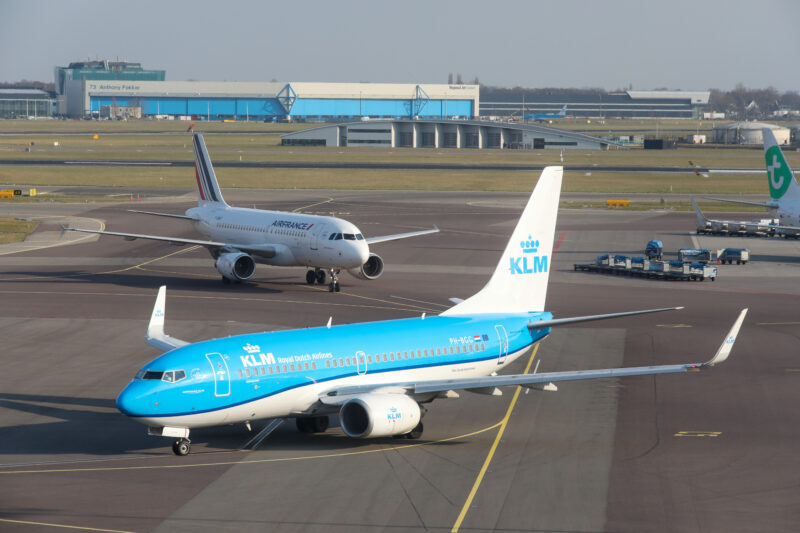Emirates’ Longest Nonstop Flights In 2025
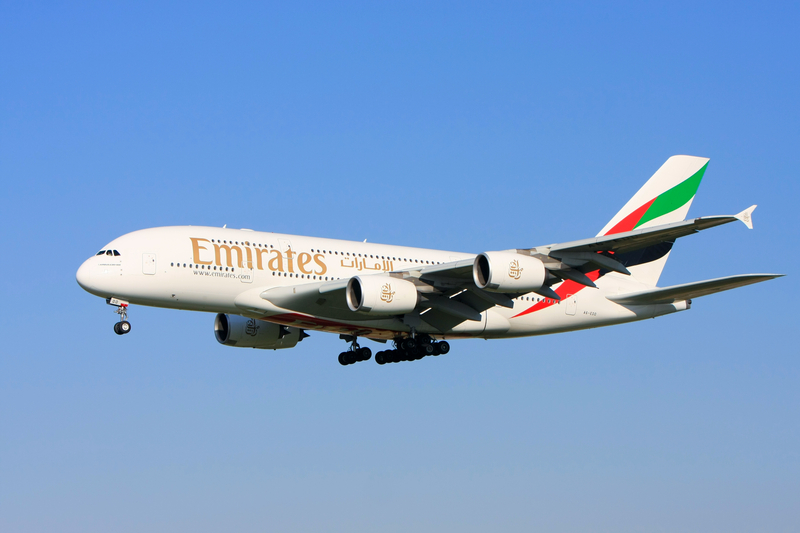
ID 12469944 © Gordon Tipene | Dreamstime.com
From Dubai (DXB), Emirates stitches together ultra-long-haul city pairs with a fleet composed entirely of widebodies—chiefly the Airbus A380-800 and Boeing 777-300ER. Filed schedules for 2025 show a dozen nonstop routes exceeding 7,400 miles, with Dubai (DXB) – Auckland (AKL) topping the list.
The 2025 ULH Board: Emirates Routes Above ~7,400 Miles
(Great-circle distances; representative equipment by schedule; returns omitted)
| Route | Miles (avg) | Typical Aircraft |
|---|---|---|
| Dubai (DXB) – Auckland (AKL) | 8,810 | A380-800 |
| Dubai (DXB) – Los Angeles (LAX) | 8,334 | A380-800 |
| Dubai (DXB) – Houston Intercontinental (IAH) | 8,165 | A380-800 |
| Dubai (DXB) – San Francisco (SFO) | 8,101 | A380-800 |
| Dubai (DXB) – Dallas/Fort Worth (DFW) | 8,038 | 777-300ER |
| Dubai (DXB) – Miami (MIA) | 7,844 | 777-300ER |
| Dubai (DXB) – Orlando (MCO) | 7,754 | 777-300ER |
| Dubai (DXB) – São Paulo/Guarulhos (GRU) | 7,591 | A380-800 |
| Dubai (DXB) – Sydney (SYD) | 7,480 | A380-800 |
| Dubai (DXB) – Brisbane (BNE) | 7,442 | A380-800 / 777-300ER (select) |
| Dubai (DXB) – Seattle/Tacoma (SEA) | 7,425 | 777-300ER |
What the pattern tells us
-
Even A380/777 split at the very top end. The A380-800 shoulders the longest missions to Auckland (AKL) and the U.S. West Coast, while the 777-300ER features prominently to Texas, Florida, and Seattle (SEA).
-
U.S. demand dominates the ultra-long list—California, Texas, and Florida each field an Emirates route above 7,700 miles—while Australia remains a high-frequency stalwart with Sydney (SYD) and Brisbane (BNE).
-
Frequency vs. gauge: Australia sees the heaviest daily activity, with Sydney (SYD) often multiple times per day on the A380, while Orlando (MCO) typically runs fewer weekly rotations on the 777-300ER.
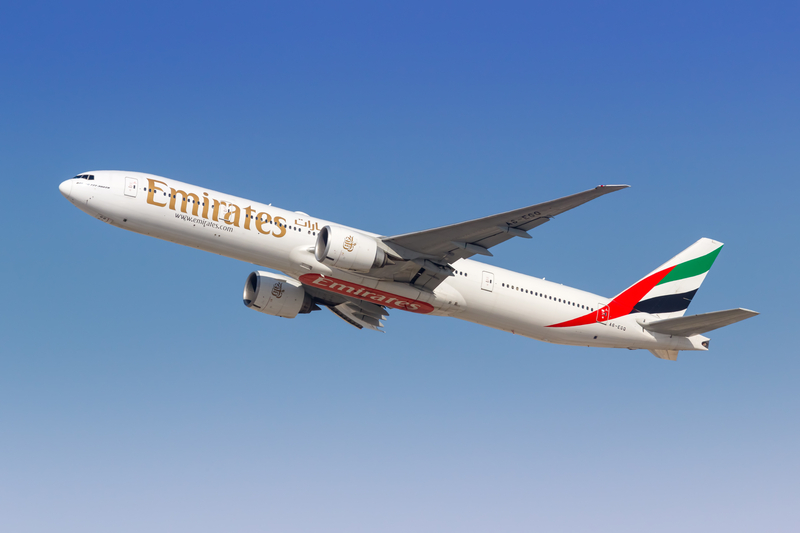
ID 331014914 © Boarding1now | Dreamstime.com
Why these two aircraft?
-
Airbus A380-800: Ideal where slot constraints and dense demand reward gauge. The double-decker’s volume (and premium cabin real estate) shines on trunk ULH markets like Dubai (DXB) – Auckland (AKL) and Dubai (DXB) – Los Angeles (LAX).
-
Boeing 777-300ER: A long-range twin with strong payload-range and per-seat economics, well-suited to high-demand ULH spokes that don’t require A380 capacity (e.g., Dallas/Fort Worth (DFW), Miami (MIA), Seattle (SEA)).
Fleet evolution: the A350 era begins (and 777X to follow)
Emirates remains the world’s largest operator of both the A380 and 777-300ER, but the long-haul mix is shifting. The carrier has begun inducting the Airbus A350-900 and holds sizable orders for the Boeing 777-9/-8 and 787 family. Expect the A350-900 to assume more long sectors over time where its lower fuel burn and range fit the mission without A380 gauge, while the 777X is poised to refresh the high-capacity twinjet role later in the decade.
The broader trend: twins rule the longest stage lengths
Efficiency gains—high-bypass engines, advanced wings, and lighter materials—have consolidated ULH work on twin-engine widebodies. The A380 remains beloved for space and quiet, but twins like the 777-300ER, A350-900, and forthcoming 777X generally deliver superior trip cost and flexibility (and allow multiple daily frequencies in lieu of single heavy waves).
Bottom Line
In 2025, Dubai (DXB) – Auckland (AKL) is Emirates’ longest nonstop, with a cluster of U.S. and Australia routes filling out the ultra-long-haul roster. The A380-800 and 777-300ER continue to share the marquee missions, while the incoming A350-900 (and, later, 777X) will gradually reshape how Emirates balances gauge, frequency, and unit costs on the farthest reaches of its network.
